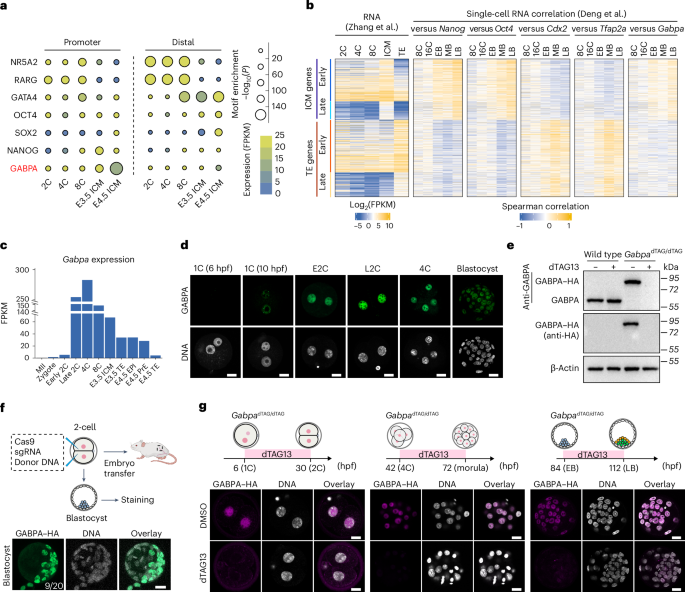The transcription factor GABPA is a master regulator of naive pluripotency
IF 17.3
1区 生物学
Q1 CELL BIOLOGY
引用次数: 0
Abstract
The establishment of naive pluripotency is a continuous process starting with the generation of inner cell mass (ICM) that then differentiates into epiblast (EPI). Recent studies have revealed key transcription factors (TFs) for ICM formation, but which TFs initiate EPI specification remains unknown. Here, using a targeted rapid protein degradation system, we show that GABPA is not only a regulator of major ZGA, but also a master EPI specifier required for naive pluripotency establishment by regulating 47% of EPI genes during E3.5 to E4.5 transition. Chromatin binding dynamics analysis suggests that GABPA controls EPI formation at least partly by binding to the ICM gene promoters occupied by the pluripotency regulators TFAP2C and SOX2 at E3.5 to establish naive pluripotency at E4.5. Our study not only uncovers GABPA as a master pluripotency regulator, but also supports the notion that mammalian pluripotency establishment requires a dynamic and stepwise multi-TF regulatory network. Zhang and colleagues identify the transcription factor GABPA as a regulator of zygotic genome activation, epiblast formation and naive pluripotency establishment.


转录因子GABPA是初始多能性的主要调控因子
初始多能性的建立是一个连续的过程,从内细胞团(ICM)的产生开始,然后分化为外胚层(EPI)。最近的研究揭示了ICM形成的关键转录因子(TFs),但哪些TFs启动EPI规范仍不清楚。在这里,我们使用靶向快速蛋白降解系统,通过调控47%的EPI基因在E3.5到E4.5的过渡,我们发现GABPA不仅是主要ZGA的调节剂,而且是初始多能性建立所需的主EPI指示物。染色质结合动力学分析表明,GABPA控制EPI的形成至少部分是通过在E3.5时结合由多能性调节因子TFAP2C和SOX2占据的ICM基因启动子,在E4.5时建立初始多能性。我们的研究不仅揭示了GABPA是一个主要的多能性调节因子,而且还支持了哺乳动物多能性的建立需要一个动态的、逐步的多tf调节网络的观点。
本文章由计算机程序翻译,如有差异,请以英文原文为准。
求助全文
约1分钟内获得全文
求助全文
来源期刊

Nature Cell Biology
生物-细胞生物学
CiteScore
28.40
自引率
0.90%
发文量
219
审稿时长
3 months
期刊介绍:
Nature Cell Biology, a prestigious journal, upholds a commitment to publishing papers of the highest quality across all areas of cell biology, with a particular focus on elucidating mechanisms underlying fundamental cell biological processes. The journal's broad scope encompasses various areas of interest, including but not limited to:
-Autophagy
-Cancer biology
-Cell adhesion and migration
-Cell cycle and growth
-Cell death
-Chromatin and epigenetics
-Cytoskeletal dynamics
-Developmental biology
-DNA replication and repair
-Mechanisms of human disease
-Mechanobiology
-Membrane traffic and dynamics
-Metabolism
-Nuclear organization and dynamics
-Organelle biology
-Proteolysis and quality control
-RNA biology
-Signal transduction
-Stem cell biology
 求助内容:
求助内容: 应助结果提醒方式:
应助结果提醒方式:


